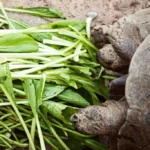Polka Dot Begonias, known scientifically as Begonia maculata, are houseplants cherished for their distinctive and enchanting appearance. With their eye-catching spotted leaves, these begonias have become a popular choice for indoor garden enthusiasts. However, you may find that a single Polka Dot Begonia is not enough to satisfy your growing affection for these charming plants. If you’re wondering how to share the joy of these begonias with others, or simply wish to expand your indoor garden, propagation is the answer. In this article, we will explore the fascinating world of Polka Dot Begonias and provide you with the know-how to successfully propagate these captivating houseplants. Understanding the propagation process is the key to nurturing your growing collection and enhancing your indoor garden.
Polka Dot Begonias
Before delving into the art of propagation, it’s essential to understand the unique characteristics of Polka Dot Begonias. Begonia maculata is a species of begonia known for its striking features:
- Spotted Leaves: The hallmark of the Polka Dot Begonia is its remarkable leaves adorned with silver-white spots that resemble polka dots. These spots stand out against the dark green background, creating an attractive and eye-catching contrast.
- Angel-Wing Shape: The leaves of this begonia are often described as angel-wing shaped due to their asymmetrical form. The lobes of the leaves have a delicate, wavy edge, further adding to their appeal.
- Elongated Stems: Polka Dot Begonias develop long, cane-like stems that give them an elegant and graceful appearance. These stems can arch and cascade, making them an ideal choice for hanging planters or elevated positions.
- Red Undersides: Another charming feature is the red undersides of the leaves. When the leaves are held up to the light, their ruby-red glow becomes visible, adding to the begonia’s allure.
Reasons for Propagation
The decision to propagate Polka Dot Begonias can be motivated by various reasons, each with its own set of benefits:
1. Expanding Your Collection: Propagation allows you to increase the number of Polka Dot Begonias in your indoor garden. This is especially advantageous if you have limited access to mature plants for purchase or if you want to create a cohesive display of these striking houseplants.
2. Sharing with Friends: If you’ve fallen in love with the beauty of Polka Dot Begonias, sharing the joy with friends and fellow plant enthusiasts is a rewarding experience. Propagating your begonias provides you with plantlets that you can gift to others.
3. Rejuvenating Older Plants: As begonias age, they may become leggy or less vigorous. Propagation can rejuvenate an older plant, allowing you to start fresh with a healthy and vibrant offspring.
4. Cost-Efficiency: Purchasing mature Polka Dot Begonias can be costly. Propagation offers a cost-effective alternative, allowing you to grow new plants from your existing collection.
Understanding these reasons for propagation will help you determine your goals and intentions as you embark on the journey of multiplying your Polka Dot Begonias. Whether you seek to expand your garden, share the beauty of these plants, or refresh an aging specimen, propagation offers a valuable means of achieving your desired outcomes.
Propagation Methods
Before you begin propagating your Polka Dot Begonias, it’s important to understand the various methods available. Here’s an overview of the propagation methods you can choose from:
- Leaf Cuttings: This is the most common and reliable method for propagating Polka Dot Begonias. It involves taking a healthy leaf, often including a small portion of the stem, and encouraging it to develop roots and shoots.
- Stem Cuttings: Stem cuttings involve snipping a section of the begonia’s stem, typically a few inches long. These cuttings can be rooted in soil or water and will develop into new plants.
- Division: Division is another option, but it’s less commonly used for Polka Dot Begonias. It requires separating a mature plant into two or more smaller plants, each with its own root system. This method is suitable for larger, established begonias.
Leaf Cutting Propagation
Among the various propagation methods, leaf cutting is the most reliable and widely used for Polka Dot Begonias. Here’s a detailed guide on how to propagate these begonias from leaf cuttings:
- Choosing a Healthy Parent Plant: Select a mature and healthy Polka Dot Begonia as the parent plant. Ensure that it is free from diseases, pests, and stress. Healthy parent plants produce healthier offspring.
- Selecting the Right Leaves: Choose leaves that are in good condition, free from damage or disease. It’s best to pick leaves that are somewhat mature but not overly old. Avoid very young or extremely old leaves.
- Preparing the Cutting: Cut a healthy leaf from the parent plant, ensuring that you include a small portion of the stem (petiole) with the leaf. This stem section will be where new roots will develop.
- Rooting the Cutting in Soil or Water: You have two options for rooting your leaf cuttings. You can either place them in a container of water or plant them directly in a well-draining potting mix. In either case, make sure the petiole is inserted at least an inch or two into the rooting medium.
- Caring for the New Plantlet: Place the container with the leaf cutting in a bright but indirect light location. Keep the soil or water consistently moist but not waterlogged. Over time, roots will develop, and new growth will emerge from the leaf. Once the new plantlet has grown to a sufficient size and has its own roots, it can be transplanted into a separate pot.
Caring for Propagated Plants
After successfully propagating your Polka Dot Begonia, it’s essential to provide proper care to ensure their healthy development. Here are some specific care guidelines:
- Soil: Use a well-draining potting mix, ideally one designed for begonias or other houseplants. Proper soil composition is essential for good root health.
- Light: Polka Dot Begonias thrive in bright, indirect light. Avoid exposing them to direct sunlight, as it can scorch their leaves.
- Humidity: Begonias appreciate higher humidity levels. Placing a tray of water near the plants or using a humidity tray can help maintain the necessary humidity.
- Watering: Keep the soil consistently moist but not soggy. Begonias prefer evenly moist conditions but can suffer if waterlogged.
- Temperature: Maintain a temperature range of 60-75°F (15-24°C) for your propagated begonias. They are sensitive to cold drafts and temperature extremes.
Conclusion
Propagating Polka Dot Begonias is a rewarding and cost-effective way to expand your indoor garden or share the beauty of these captivating plants with others. By understanding the propagation methods and following the guidelines for successful leaf cutting propagation, you can multiply your begonias and enjoy their elegant charm in various corners of your home.
Remember that caring for your propagated plants is crucial for their long-term health and beauty. Providing the right growing conditions, from proper soil and light to humidity and watering, ensures that your Polka Dot Begonias will flourish and grace your living spaces with their unique spotted leaves. Propagation is not only a practical skill but also an opportunity to deepen your connection with these charming houseplants.




